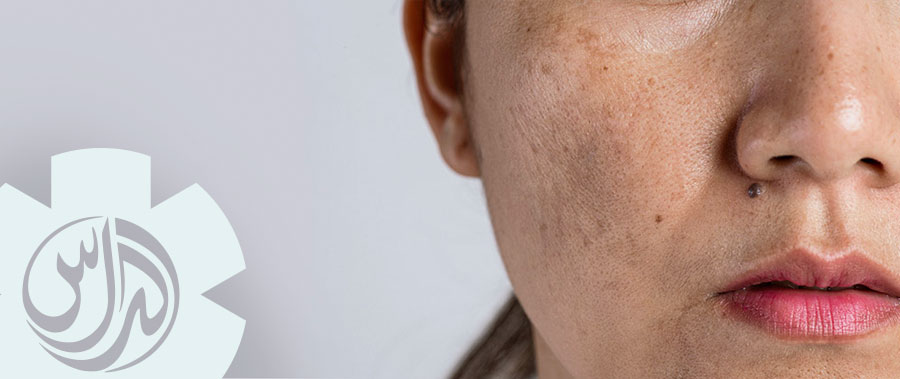
Melasma is a common skin condition characterized by irregular patches of darker, mainly grayish-brown, skin. It usually affects women, especially those with a darker complexion, and when it occurs during pregnancy it is dubbed “the mask of pregnancy”. Discoloration usually appears on the forehead, cheeks, upper lip or nose. Being in the sun additionally intensifies melasma, so women from tropical regions frequently suffer from this skin disorder. Only about 10% of people affected by melasma are men. Melasma doesn’t have any other symptoms other than skin discoloration, but it can cause appearance-related distress and affect psychological well-being.
It is still unclear what causes melasma, but some common triggers have been identified. This skin pigmentation disorder occurs when melanocytes (skin cells responsible for production of the pigment) start overproducing melanin and accumulating it in the dermis – the middle layer of skin. According to research melasma is a genetic disorder and in most cases it is chronic.
There are several factors that trigger this condition, and some of them are:
- Sun exposure. This is the most important factor because ultraviolet (UV) light causes melanin overproduction. Melanin has a protective role against UV light, and if the skin is overly exposed to sun, it tends to accumulate to prevent damage. That is why melasma worsens during the summer.
- Hormonal changes that occur when during pregnancy, as well as those triggered by birth control pills and hormone replacement therapy also cause melasma.
- Medications and cosmetics. Certain medications, for example new cancer treatments, as well as scented soaps and similar cosmetic products can bring on melasma.
- Thyroid gland disease. People with low levels of thyroid hormone are also prone to melasma.
In certain cases melasma can go away, for example when a person stops taking birth control. Still, there is no cure for this persistent skin disorder at the moment, but the symptoms can be relieved with proper treatment. Among the first measures for reducing melasma are avoiding sun exposure, applying sunscreen on a regular basis and wearing clothes that can protect the skin.
Nowadays, several treatment methods are available such as:
- Hydroquinone (HQ). This medication is a topically applied agent for depigmentation, and it can be both over-the-counter and prescription medicine depending on the strength of HQ. This medication is the first approach in treating melasma.
- Tretinoin. This medication is also used to lighten the skin. In certain cases, it is combined with HQ and corticosteroids in order to create a so-called “triple cream”. Tretinoin should not be used during pregnancy.
- Azelaic acid. It is used to depigment skin and to reduce the activity of melanocytes.
- Laser therapy. There are several types of laser therapy for treating melasma, but their effects are sometimes a matter of dispute.
If you suffer from this bothersome skin condition, make an appointment and let our experienced dermatologist help you deal with it.
Book a visit 04 452 998 or by filling the online form